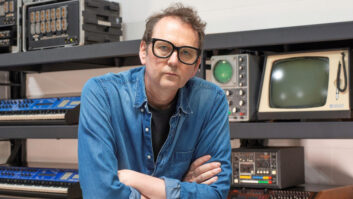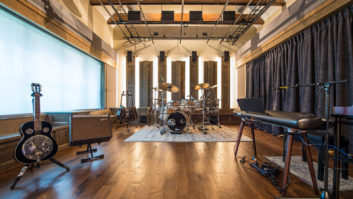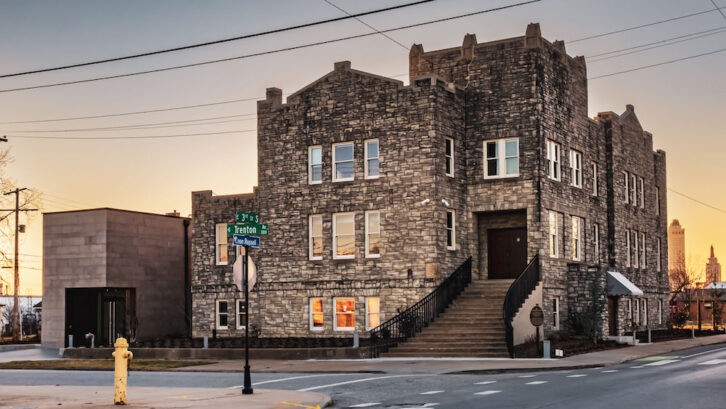
When you hear the term “recording mecca,” the usual locales come to mind: London, New York, Los Angeles, Nashville. Despite its rich recording history—and the fact that it is the birthplace of the Tulsa Sound—Tulsa, Okla., has for the most part flown under the radar. Now that recording legacy is now being honored and rejuvenated with the opening of The Church Studio.
As the name implies, The Church Studio occupies a stone and brick structure originally built in 1915 as the Grace Methodist Episcopal Church. It was purchased by Oklahoma native Leon Russell in 1972, who (along with his business partner, Denny Cordell) converted the space into a recording studio and offices for Shelter Records.
During the 1970s, the studio served as the epicenter of the Tulsa Sound, hosting musicians including Russell, Eric Clapton, Willie Nelson, George Harrison, Bob Dylan, JJ Cale, Dwight Twilley, Stevie Wonder, Jimmy Buffett, Kansas and Mudcrutch (later to reform as Tom Petty and The Heartbreakers).
Russell’s tenure at The Church was brief, ending in 1978. Between that time and 2016, the building changed hands several times and was used for a variety of purposes. It wasn’t until 2016 that fate would lend a hand to its next custodian.
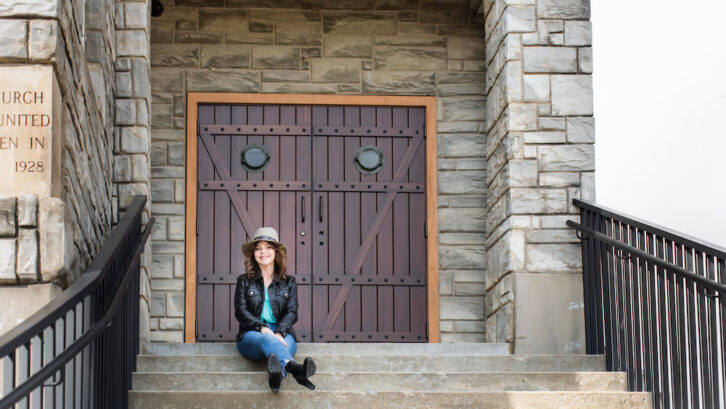
“I was renovating a property nearby,” recalls Teresa Knox, a Tulsa native and now owner of the facility, “and I found myself going to the church to check it out. It was in a really sad shape, kind of a dilapidated property with boarded-up windows. If you’re from Tulsa, you know about Leon Russell, and you’re familiar with the history of the church. When Leon returned here in 1972, he was the top touring artist in America. He had just finished his third studio album, Carney, and had recently enjoyed success with Joe Cocker in Mad Dogs and Englishmen and The Concert for Bangladesh with George Harrison. Leon was a superstar, and it was very exciting for our community when he came back home.
“But it made me sad that the building— which had such a wonderful history, with not only Leon but also with Steve Ripley, founder of the Tractors—was in such poor condition,” she continues. “I found out who owned it and wrote the owner a letter, asking if he’d consider selling it. He replied that it wasn’t for sale, but we started meeting and I sort of became obsessed with it. Eventually, I closed on the building and walked inside for the first time after I owned it. I bought it sight unseen, really.”
Now that’s commitment.
TIME TO REBUILD
The first order of business for Knox was ensuring the building’s structural integrity. “There had been five owners between Leon and myself,” she explains, “and maintenance wasn’t exactly a priority. My number-one goal was securing the structure, including reinforcing the foundation, and re-doing the electrical, mechanical, plumbing and roof. We also needed to make it ADA-compliant, and we added an elevator to make it convenient for artists. It took more than five years to restore the property.
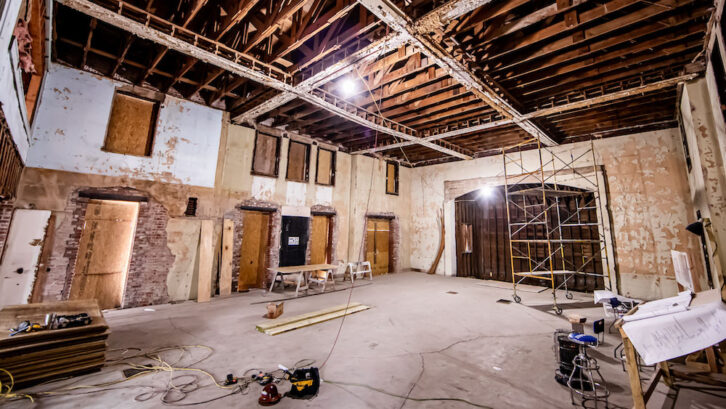
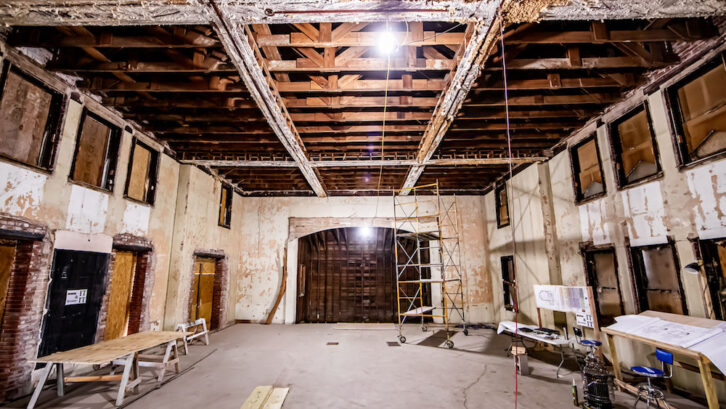
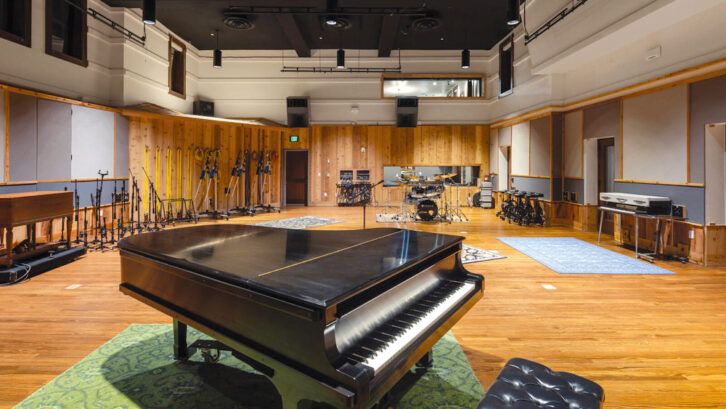
“My second goal was to get the building listed on the National Register of Historic Places, because there aren’t many historic recording studios that are recognized by their home state, as well as by the federal government. What Leon accomplished was so extraordinary that it deserves to be acknowledged. I didn’t know for sure what I was going to do with it, but early on, it took on a life of its own. After learning about other historic recording studios, like RCA Studio B, Motown, Stax and Muscle Shoals, it became apparent that they put a big emphasis on the museum aspect. Although I love the music history, we took a hybrid approach: First, studio. Second, public attraction. I wanted it to be relevant for today’s artists and to continue the legacy that Leon started. That’s when I realized we have to bring this back to being a working studio.
“I started exploring what that would look like and discovered it was [like many industries] in a state of technological disruption. People get Grammy Awards for recordings made in their homes, but there’s no substitute for analog recordings and the magic that happens when musicians play live in the same room.”
Knox enlisted the help of Nashville studio consultants Chad Hailey and Steve Durr, both of whom worked in tandem with the architects to follow the best practices set forth by the National Park Service.
“I wanted to honor the early church and the way it looked in 1915,” Knox reveals, “but its period of historical significance was during Leon’s time, and that’s what qualified us for being on the National Register. It had to have that ’70s vibe, but of course, there have been a lot of advancements in acoustic design and engineering, so we took it down to the bare bones and repurposed all of the wood. The live room is the original sanctuary, and the control room occupies the same footprint as when it was used by Leon, but we were able to expand slightly by adding two iso booths—so we now have four.”
GETTING IN GEAR
What better way to ensure a ’70s vibe than installing a vintage Neve console? Knox knew that not any Neve desk would do, so she was introduced to one with an appropriate pedigree.
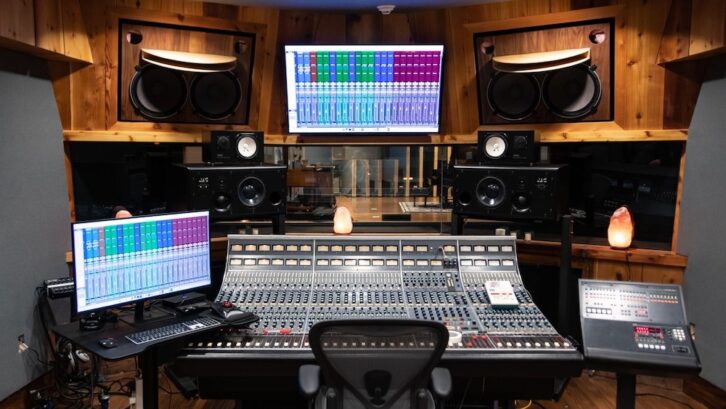
“The first piece of analog gear I purchased was Daniel Lanois’ Neve 8068,” says Knox, “the same console that was used to record so many great artists, like Dylan, Emmylou Harris, Willie Nelson and Neil Young [Editor’s Note: The console was also pictured on the cover of Dylan’s Time Out of Mind]. It needed some love, so we had Jeff Pinn (San Francisco) restore the console, and it’s now back to factory spec. The sound of that room coming through that console is amazing!”
Knox and consultant Hailey have been able to source other gear worthy of this prestigious home, including a Studer A827 Gold Edition 2-inch 24-track, an Ampex ATR-102 (half-inch), and a serious assortment of vintage microphones.
According to Knox, “The Studer A827 is stunning. It’s pretty much brand-new, with only around 180 hours when we acquired it. We also have a 32-in/40-out Pro Tools HDX system with Burl Mothership converters, so we can record to tape or Pro Tools, or we can work in the box and run the tracks to tape afterward.
“There’s also quite an assortment of classic microphones, such as Neumann KM56s, KM84s, U47, U67, AKG C12 and C24, Telefunken ELA M 251, all maintained by The Mic Shop (Franklin, Tenn.),” she continues.
“I found a U47 in Nashville that was new old stock (it still had the wax seals) and was originally at an old radio museum in Oklahoma, so I brought it back home. Almost every piece has a really cool story as part of the provenance, such as the LA-2A and two LA-3As that we recently acquired from Christine Lakeland-Cale. (JJ Cale’s widow—Ed.) JJ, a recording alumnus of The Church Studio, was signed to Shelter and was a Tulsa native.”
Durr custom-designed the control room’s main monitors, employing TAD components and Bryston amplification. The mains are supplemented by a pair of ATC SCM50 ASL mid-fields and Yamaha NS10Ms. The studio also has an in-house collection of new and vintage instruments, including a Yamaha C7 Conservatory Grand piano, Hammond B3 with Leslie 122, Fender Rhodes 73, Wurlitzer 200A and a Hohner Clavinet D6.
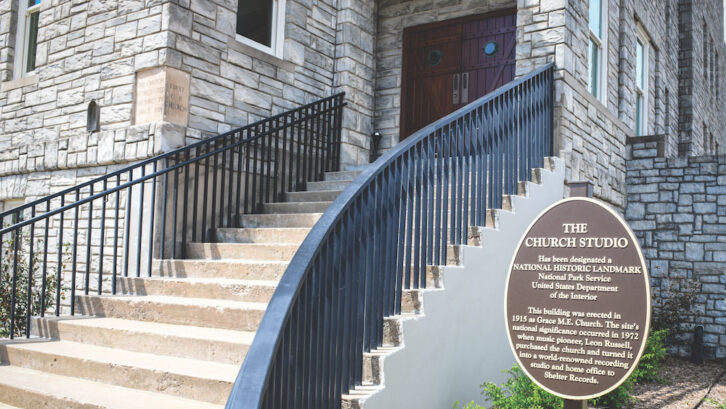
CREATING A NEW LEGACY
Historically, The Church Studio occupies a rightful place alongside legendary studios such as RCA Studio B, Stax, Motown and Muscle Shoals, and the facility includes a comprehensive collection of Leon Russell artifacts and memorabilia—much of which has been personally collected by Knox over the years. “One of the great aspects of the studio,” she observes, “is that if an artist wants to take a break, they can explore the collection and see original compositions or lyric sheets from Willie Nelson, Leon or others. Musicians find it inspiring—especially if they’re writing while they’re recording. And we’re discovering that artists become very emotional when they walk into the studio—some even get teary-eyed! That kind of reaction is what makes all the hard work worth it.”
Knox emphasizes that the facility is “first and foremost a working studio. The week that we opened, 4,200 people walked in our doors to tour, and we’ve since had thousands of visitors. My biggest fear was that it would appear too touristy. I didn’t want what’s happened to other music landmarks, where tourism overshadows music production. I think it’s great that we have landmarks that celebrate music history, but like the entrepreneurial vision of Shelter Records, our strategy is to make new music and be relevant to today’s artists. That’s the best way we can pay tribute to Leon’s extraordinary life and career.”
